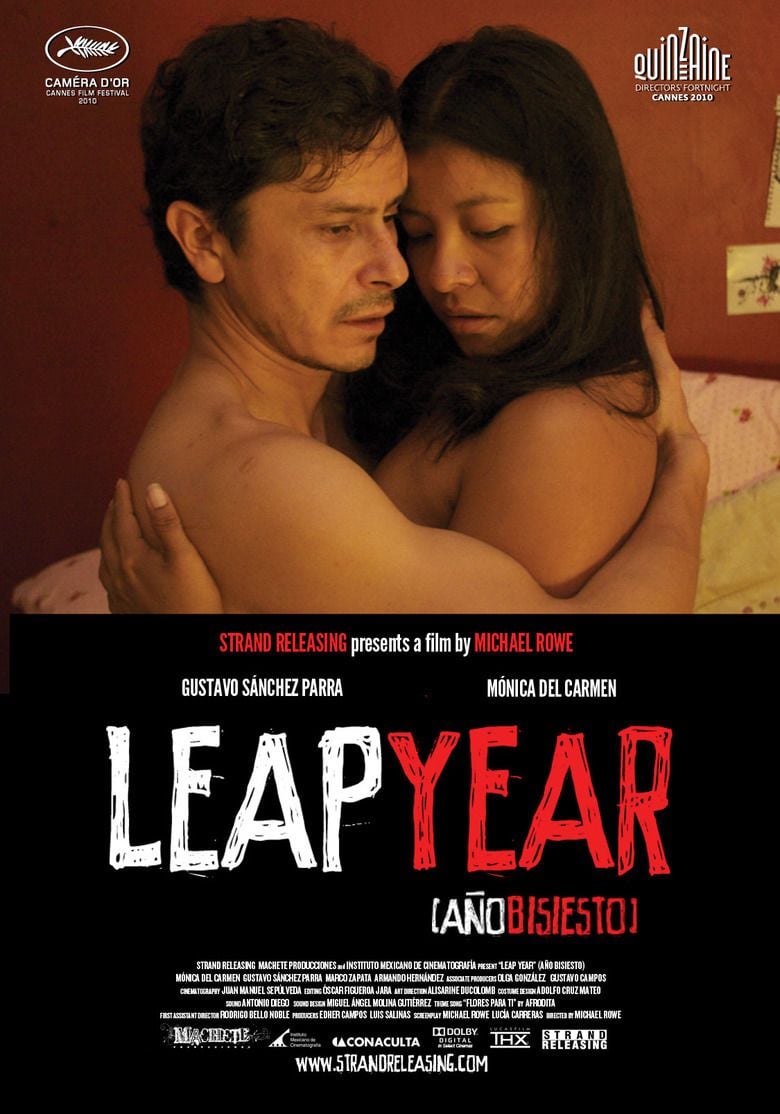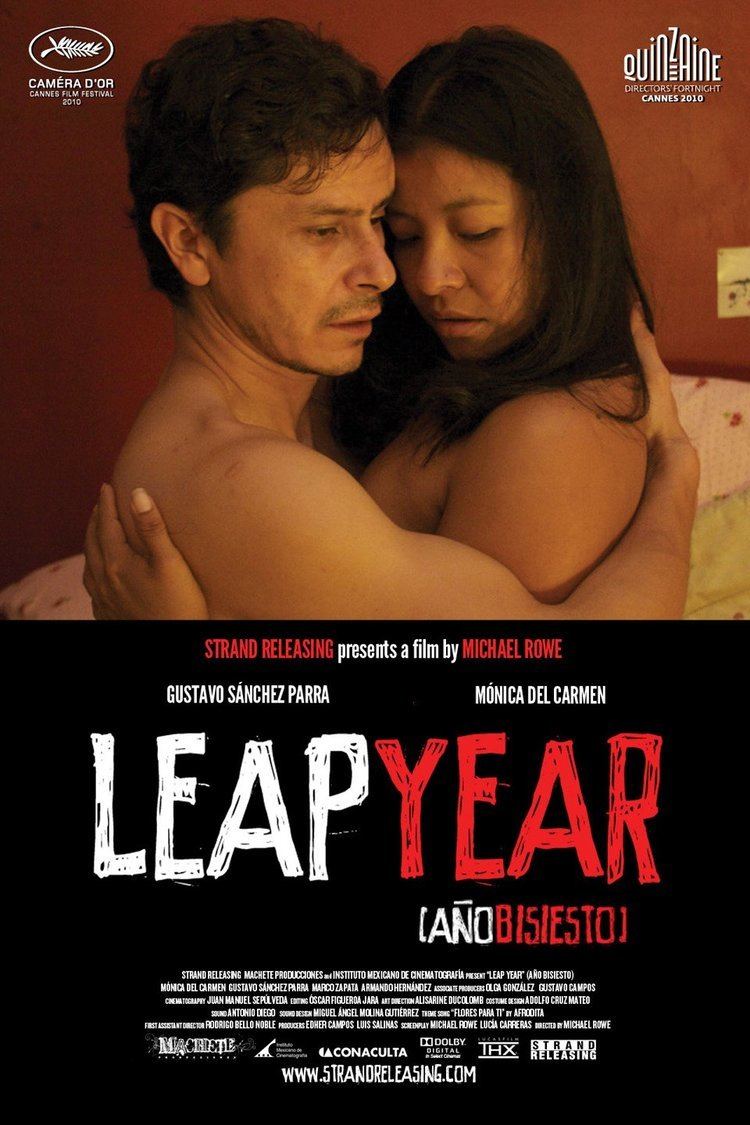Año bisiesto
6.2 /10 1 Votes6.2
Director Anand Tucker Music director Randy Edelman Country Mexico | 6/10 IMDb Genre Drama Duration Language Spanish | |||||||||||||||||||||||||||||||||
 | ||||||||||||||||||||||||||||||||||
Release date May 17, 2010 (2010-05-17) (Cannes) Initial release January 6, 2010 (New York City) Screenplay Deborah Kaplan, Harry Elfont Cast Mónica del Carmen (Laura), Armando Hernández (Hombre 3), José Juan Meraz (Novio Vecina), Gustavo Sánchez Parra (Arturo)Similar movies Sexual Chronicles of a French Family , Hard Candy , The Dark Knight , The Human Centipede 2 (Full Sequence) , All Ladies Do It , 9 Songs | ||||||||||||||||||||||||||||||||||
Trailer a o bisiesto
Año Bisiesto (Leap Year) is a 2010 Mexican film from the Australian-Mexican screenwriter and film director Michael Rowe.
Contents
Synopsis

Shot almost entirely in a seedy one-room apartment, this psychodrama details the grinding routine of Laura (Mónica del Carmen), a 25-year-old freelance journalist, who lives a very isolated life in her small apartment rarely venturing out besides getting men home from nightclubs and never going beyond one night in bed. Until she meets the quiet, inscrutable Arturo (Gustavo Sánchez Parra) and the pair enter into an intense, violent sexual relationship. The story focuses on the fascinating evolution of their relationship. As days go by, Laura crosses out the days on a calendar, revealing her secret past to her lover. It takes place in February on a leap year.
Main releases

The film premiered in France, at the Cannes Film Festival Directors' Fortnight the 17th of May, 2010, and a month later on a public release. Next place to see the film was Rowe's home country, Australia, at the Melbourne International Film Festival and many other Film Festivals followed (Toronto, Athens, Rio de Janeiro, Sao Paulo, Mar del Plata in Argentine, Hong Kong and the Latin Beat Film Festival in Japan, among others).
According to the producers, the film was sold in over 30 countries and in Mexico it played in commercial theaters with only 12 copies and was seen by close to 50,000 spectators –unlike large productions that screen up to 200 copies.
